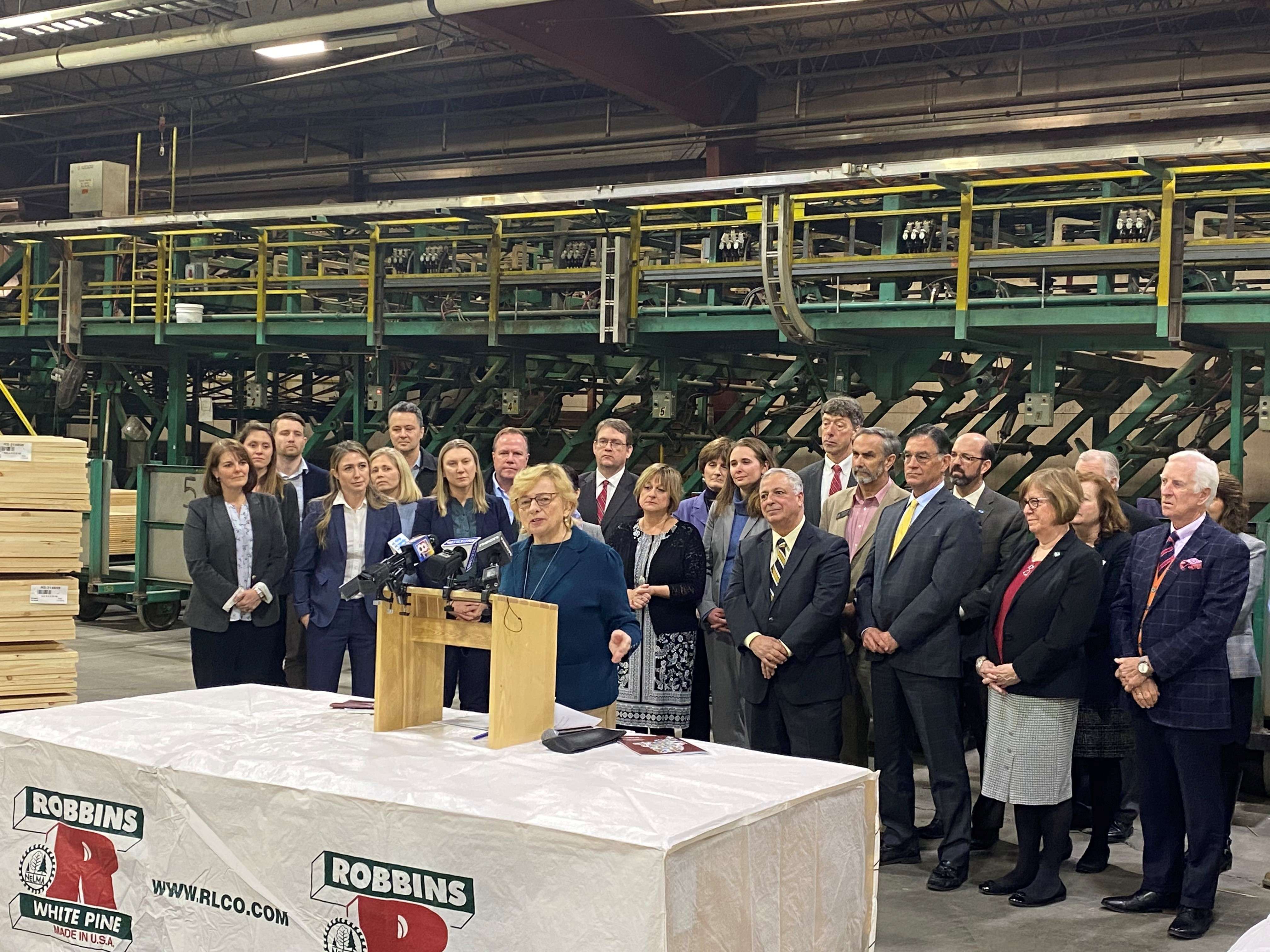
Processing Your Payment
Please do not leave this page until complete. This can take a few moments.
- News
-
Editions
-
- Lists
-
Viewpoints
-
Our Events
-
Event Info
- Women's Leadership Forum 2025
- On the Road with Mainebiz in Bethel
- Health Care Forum 2025
- On The Road with Mainebiz in Greenville
- On The Road with Mainebiz in Waterville
- Small Business Forum 2025
- Outstanding Women in Business Reception 2025
- On The Road with Mainebiz in Bath
- 60 Ideas in 60 Minutes Portland 2025
- 40 Under 40 Awards Reception 2025
- On The Road with Mainebiz in Lewiston / Auburn
- 60 Ideas in 60 Minutes Bangor 2025
Award Honorees
- 2025 Business Leaders of the Year
- 2024 Women to Watch Honorees
- 2024 Business Leaders of the Year
- 2023 NextUp: 40 Under 40 Honorees
- 2023 Women to Watch Honorees
- 2023 Business Leaders of the Year
- 2022 NextUp: 40 Under 40 Honorees
- 2022 Women to Watch Honorees
- 2022 Business Leaders of the Year
-
-
Calendar
-
Biz Marketplace
- News
- Editions
- Lists
- Viewpoints
-
Our Events
Event Info
- View all Events
- Women's Leadership Forum 2025
- On the Road with Mainebiz in Bethel
- Health Care Forum 2025
- On The Road with Mainebiz in Greenville
- On The Road with Mainebiz in Waterville
- + More
Award Honorees
- 2025 Business Leaders of the Year
- 2024 Women to Watch Honorees
- 2024 Business Leaders of the Year
- 2023 NextUp: 40 Under 40 Honorees
- 2023 Women to Watch Honorees
- 2023 Business Leaders of the Year
- + More
- 2022 NextUp: 40 Under 40 Honorees
- 2022 Women to Watch Honorees
- 2022 Business Leaders of the Year
- Nomination Forms
- Calendar
- Biz Marketplace
Collaboration is key for Maine's 10-year economic plan, Johnson says
More Information
The last time the state put together an economic strategic plan was 24 years ago, but copies of it are hard to come by.
That won't happen with Maine Economic Development Strategy for 2019-29 unveiled last week, Heather Johnson, commissioner of the Department of Economic and Community Development said Monday.
"You can craft the best, well-made plan and it can sit on a shelf," but collaboration and implementation will make this plan different from those that have come before it, she said.
The 42-page plan unveiled by Gov. Janet Mills last week came after a June summit that brought together 250 people from a variety of sectors across the state, then input from more than 1,300 in a cross-state listening tour. Johnson said the work is just beginning.
The next steps involve determining how work streams in sectors across the state will proceed. While there will be DECD-based project managers, those involved in the sectors will determine how to carry out the plan's strategies. The idea is, in many cases, to build on what's already working.
For instance, "Who are the experts at attracting talent?" she said. What are they doing that's working? Sector representatives from across the state will help determine how things will move forward.
"I was shocked, honestly, at the number of people who wanted to participate and engage," Johnson said. She quotes the plan's steering committee chair, Bruce Wagner, CEO of the Finance Authority of Maine: "No call went unanswered."
That's a sign, she said, that people are ready to take action.
The most important takeaway is that the plan's success will be built on collaboration between the public and private sectors, education, business and more. "That's something new," she said, in relation to previous plans. She said the plan is also a roadmap, designed to grow and evolve as the state's economy does, and be effective, no matter who may be in the State House.
As things begin to change, "It's much harder to move away when people see action on the ground," she said.
Sobering statistics
The overall goal is to build a diverse and strong economy that can sustain the state, Johnson said.
The three specific main goals are to increase the state's average annual wage by 10%, increase the value of what's produced in the state by 10% per worker and to attract 75,000 people to the state's talent pool.
Those goals were driven by some sobering statistics:
- In the last 20 years, the state's annual earnings fell from 83% of the national average to 78%.
- The average job in Maine produces $88,000 in net, or value-added, sales; the national average is $120,000.
- The state's gross domestic product has grown 0.6% in the past 10 years as opposed to 1.8% nationally.
"The global economy is changing and requiring innovation and new workforce skills," the report says. "Maine needs to chart a course that addresses these challenges and creats opportunities based on them. Our economy can't stay the same; doing nothing will result in dramatic economic, wage and job loss."
According to economists Michael LeVert and Catherine Reilly, who modeled the consequences for greater Portland, no in-migration for the region will, by 2034, result in a 10% decrease in workforce. The result would be plummeting income, employment and tax revenue.
Despite the numbers trend, the plan is about positive action. Strategies to meet those goals are:
- grow talent in Maine;
- attract new talent to the state;
- promote innovation;
- improve connectivity;
- bolster infrastructure;
- maintain a stable business environment; and
- promote hubs of excellence.

How to get there
How to get to those are wide-ranging and will involve input from leaders who are already making inroads, Johnson said.
For instance, getting students involved and connecting them with career paths that will lead to good and needed jobs is important. "There are already groups doing that work," Johnson said. "What are they doing that really works well? Let's tap into that."
Better access to broadband, said Johnson, who was executive director of ConnectME, the state's broadband authority, before joining Mills' cabinet. She said that people don't always see the link between broadband access and growing and attracting talent, boosting innovation and business growth and more.
Making better use of resources that help communities get to where they have access is part of the plan — 50 communities have completed broadband access plans but have yet to get the money to implement them, she said.
Another example is offering more incentives to those who'd like to invest in Maine, and boosting the state's research and development investment levels, which have dropped 50% since 2009.
The plan calls for raising the investment cap of the the Maine Seed Capital Tax Credit program, revitalizing the Maine Innovation Economy Advisory Board and promoting exports to strengthen the climate for startups.
If people see any immediate results from the plan, it may be subtle, like more new people moving into a neighborhood. She hopes there will also be conversations, and partnerships, and kids coming home from school and talking about new possibilities for their future.
There's a reason, she said, that the launch last week was held at Robbins Lumber in Searsmont.
"They're a microcosm for what this plan is all about," Johnson said. The company is a heritage industry, but one that's constantly innovating, finding new career paths with a creative workforce, and collaborating.
The company is also not on State Street in Augusta.
"This plan isn't about what's happening in [the Statehouse]," she said, it's about what's happening in Maine. "Good economic development is collaborative, and it's local."
About the Maine Economic Development Strategy for 2019-2029
The Maine Economic Development Strategy for 2019-29 was unveiled Dec. 11 by Gov. Janet Mills, who called the growth of Maine’s economy one of our state’s highest priorities. The nonpartisan plan, which is the first of its kind in more than two decades, aims to foster collaboration among the public, private, nonprofit and education sectors to grow and diversify Maine’s economy. It establishes three overarching goals, recommends seven core strategies and outlines concrete actions to achieve that growth. For a copy of the plan and how it came to be, visit maine.gov/decd.













0 Comments